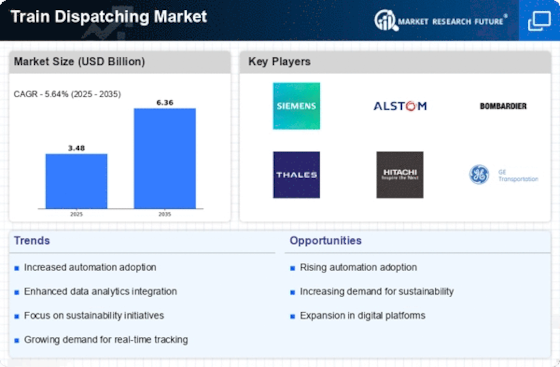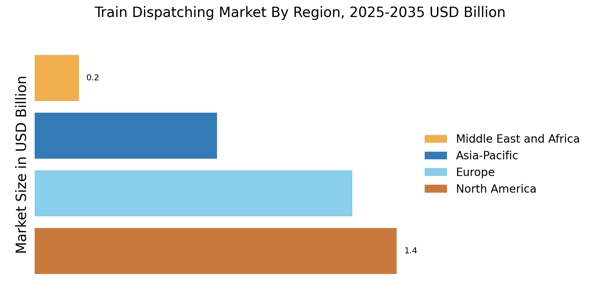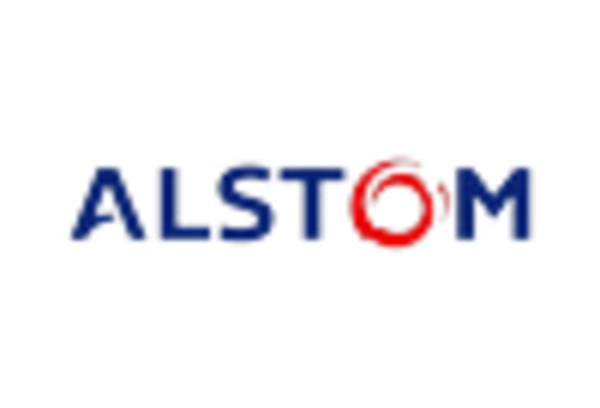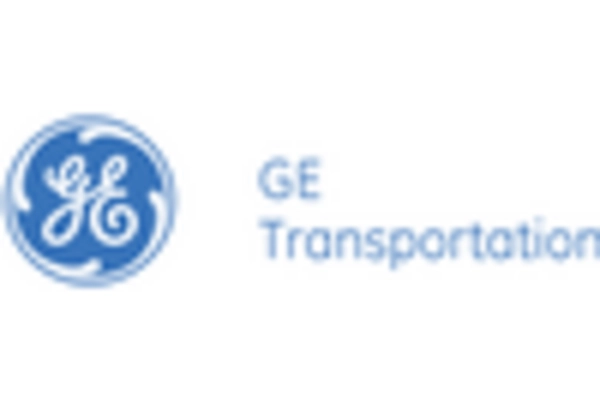The Train Dispatching Market is currently characterized by a dynamic competitive landscape, driven by technological advancements and the increasing demand for efficient rail operations. Key players such as Siemens (Germany), Alstom (France), and Bombardier (Canada) are actively engaged in enhancing their operational capabilities through innovation and strategic partnerships. Siemens (Germany) focuses on digital transformation, leveraging its expertise in automation and data analytics to optimize train dispatching processes. Alstom (France), on the other hand, emphasizes sustainability, integrating eco-friendly technologies into its dispatching solutions, which aligns with global environmental goals. Collectively, these strategies not only enhance operational efficiency but also foster a competitive environment that prioritizes technological advancement and sustainability.
In terms of business tactics, companies are increasingly localizing manufacturing to reduce costs and enhance supply chain resilience. This approach appears to be particularly effective in a moderately fragmented market, where the collective influence of key players shapes competitive dynamics. The emphasis on supply chain optimization is evident, as companies strive to mitigate disruptions and ensure timely delivery of services. This strategic focus on localization and optimization is likely to enhance the overall competitiveness of the market.
In August 2025, Siemens (Germany) announced a partnership with a leading technology firm to develop an advanced AI-driven dispatching system. This initiative aims to enhance real-time decision-making capabilities, thereby improving operational efficiency and reducing delays. The strategic importance of this move lies in Siemens' commitment to integrating cutting-edge technology into its operations, which could potentially set a new standard for the industry.
In September 2025, Alstom (France) unveiled a new eco-friendly dispatching solution that utilizes renewable energy sources. This innovation not only aligns with global sustainability trends but also positions Alstom as a leader in environmentally responsible rail solutions. The strategic significance of this development is profound, as it reflects a growing market demand for sustainable practices, which could influence customer preferences and regulatory frameworks.
In October 2025, Bombardier (Canada) expanded its operations in Asia by establishing a new manufacturing facility focused on train dispatching systems. This strategic move is indicative of Bombardier's intent to tap into the rapidly growing Asian market, which presents substantial opportunities for growth. The establishment of this facility is likely to enhance Bombardier's competitive positioning by enabling localized production and quicker response times to market demands.
As of October 2025, the competitive trends in the Train Dispatching Market are increasingly defined by digitalization, sustainability, and the integration of artificial intelligence. Strategic alliances among key players are shaping the landscape, fostering innovation and collaboration. Looking ahead, it appears that competitive differentiation will evolve from traditional price-based competition to a focus on technological innovation, reliability in supply chains, and sustainable practices. This shift suggests that companies that prioritize these aspects may gain a significant advantage in the increasingly competitive market.


















Leave a Comment